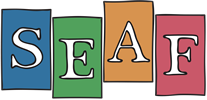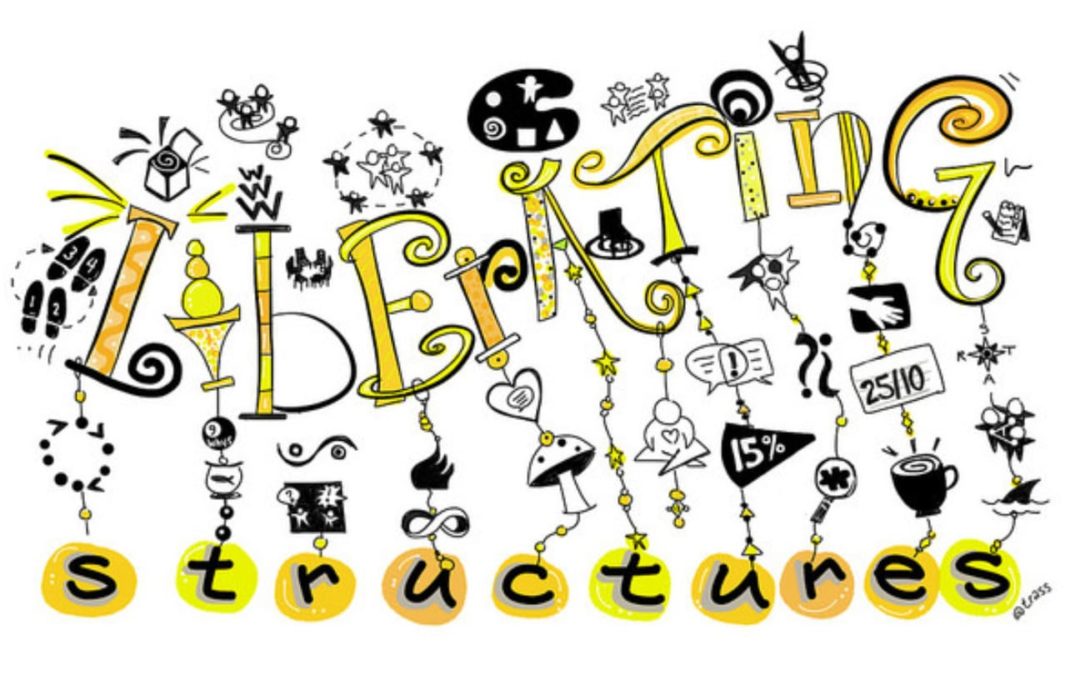It’s been close to four years since I first heard the term “Liberating Structures.” Simply put, Liberating Structures (LS) are a collection of facilitation techniques that stimulate better conversations, deeper thinking, and greater engagement. It was great to have Anna Jackson and Fisher Qua lead the Southeast Association of Facilitators in an intro session in June, which reminded me of why I have been so enthusiastic about the practice of the structures.
During those four years, I’ve evolved from a curious LS dabbler to passionate practitioner, advocate, and trainer. The best part is that I never stop learning, whether it be a different way to implement a structure, a nuance in its framing or set-up, or a way to go deeper in my practice. Just last week, for example, I attended SEAF’s June workshop on LS, and was thrilled, but not surprised, to add a few new notches on my LS toolbelt.
Beyond the obvious benefit of providing a consistently effective repertoire of group engagement strategies, LS has also taught me a lot about myself as a facilitator. Below, I’ve shared the top 3 things that LS has revealed to me that have drastically impacted who I am as a facilitator:
- Everything is better with a good prompt.
- Strategic planning is just so…stifling!
- Lectures are dead!
Everything is Better with a Good Prompt
One of the first things we learn in facilitation 101 training is that it’s all about the questions we ask. LS has helped me take my questioning to the next level by making prompts, versus basic questions, a staple of my session designs. The difference between questions and prompts is subtle, but powerful enough that I lean towards prompts more often, especially during virtual sessions. Here are a few examples of what I mean:
Question: What do you hope to achieve today?
Prompt: What I hope can happen today is…
Question: What did you like about today’s session?
Prompt: Today, I appreciated…
Question: What are our next steps?
Prompt: Something I plan to do is…
There are deeper psychological factors at play here, but that’s more than I have time and space to share here. Bottom line is that, when I use prompts to pull insights, ideas, questions, or concerns from participants: more people respond; they share more information, and (most importantly!) they are more honest.
Strategic Planning is Just So…Stifling!
My first attempts at strategic planning facilitation were arduous at best. I experimented with a number of different strategic planning frameworks, none of which felt like they quite hit the mark with either my clients or my facilitation style.
Imagine my delight when I discovered Strategy Knotworking, which is essentially a “string,” or combination, of Liberating Structures that can transform the way we think about and execute upon strategy. Strategy Knotworking acknowledges the unpredictability of most organizations’ contexts, and shifts the process away from development of a “single monolithic plan” that assumes a linear future. It’s also just a lot more fun.
During Strategy Knotworking, we travel through some version of the following questions (which have definite echoes of traditional planning, which helps when selling the concept to skeptical clients:
- Purpose: What is the fundamental justification & deepest need for our work?
- Context: What is happening around us that demands creative change?
- Challenge: What are the paradoxes we must face in order to make progress?
- Baseline: Where are we starting, honestly?
- Ambition: Given our purpose, what seems possible now?
- Action and Evaluation: How are we acting our way toward the future, evaluating what is possible as we go?
Lectures are Dead!
I design a lot of multi-stakeholder convenings, workshops, conferences, and other sessions during which content must be shared (in some cases, lots and lots of content…). Before I found Liberating Structures, I knew instinctively that traditional didactic, slide-driven lectures were ineffective and disengaging – but I struggled to conceive of an alternative.
Enter Liberating Structures, and my two go-to techniques for delivering content in ANY type of session: the Celebrity Interview and the User Experience Fishbowl. The key difference between these structures and the “typical” presentation or panel are:
- No slides!
- Speakers interact with other humans in an informal and authentic way
- The Q&A session is transformed by inviting the audience to generate questions in small groups
The key, in my experience, to incorporating these (and really any of the LS) structures into your toolkit, is to start by executing them as they were designed. Then, once you’ve mastered them, iterate and break the rules!
===
Simply put, Liberating Structures – and the various iterations of them that I’ve experimented with over the years – have completely changed the facilitation game for me and my clients. I will be forever grateful to the SEAF colleague who first introduced me to them, and to the various other SEAF colleagues with whom I’ve worked with to hone and grow our LS practice. Check out the LS website for more information about LS principles, microstructures, and community.

Nadine Doyle is on a mission to transform our workplaces, one meeting at a time. Prior to founding Doyle Strategies in 2017, Nadine spent 15 years leading strategic partnerships, communications, and policy in the public, private, and nonprofit sectors. As a process design nerd, certified master and virtual facilitator, and passionate student of dialogue, Nadine helps teams work, think and connect better together through facilitated workshops, trainings, and coaching sessions.


Recent Comments